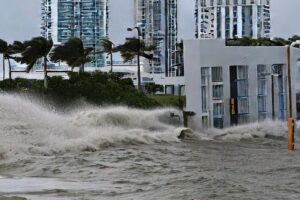
The 2023 Central Pacific and Atlantic Hurricane Seasons start in just a few weeks on June 1 and ahead of the fresh season, scientists with NOAA have released an upgrade on storm surge models used there. Known as the Probabilistic Storm Surge model, or P-Surge for short, this serves as the primary model for predicting storm surge associated with high-impact weather like hurricanes and tropical storms. This version 3.0 advances storm surge modeling and forecasting for the continental United States, Puerto Rico, and the U.S. Virgin Islands.

According to NOAA, this upgrade features several new capabilities that will help forecasters better understand the risk of storm surge. This includes new forecasts for surge, tide, and waves for Puerto Rico and the U.S. Virgin Islands. Forecasters can also now run the model simultaneously for two storms. This capability can help when there are two storms making landfall on the U.S. or one on the U.S. mainland and one impacting Puerto Rico and/or the U.S. Virgin Islands. NOAA also says this upgrade improves calculations of friction over different types of land surfaces, which helps more accurately compute the extent of water inundation along the coast.
“We are seeing a sharp increase in catastrophic storm surge impacts in our coastal communities,” said Ken Graham, director of NOAA’s National Weather Service. “Our new capabilities to effectively and accurately model and forecast storm surge is critical to upholding the NWS mission of protection of life and property.”
The model uses official wind forecasts from NOAA’s National Hurricane Center (NHC) as well as NHC’s historic 5-year average errors in track, size and intensity of storms to create a collection of roughly 500 to 1,000 representative wind and pressure inputs. Those inputs are fed into NOAA’s Sea, Lake and Overland Surges from Hurricanes (SLOSH) model, which computes water levels and inundation due to storm surge and tide. P-Surge combines the resulting water level outputs from SLOSH with the likelihood of the representative inputs from NHC data to create probabilistic products. This approach provides a range of possible outcomes based on the percent chance of each, and allows NWS forecasters to communicate worst-case scenarios to core partners and the general public.